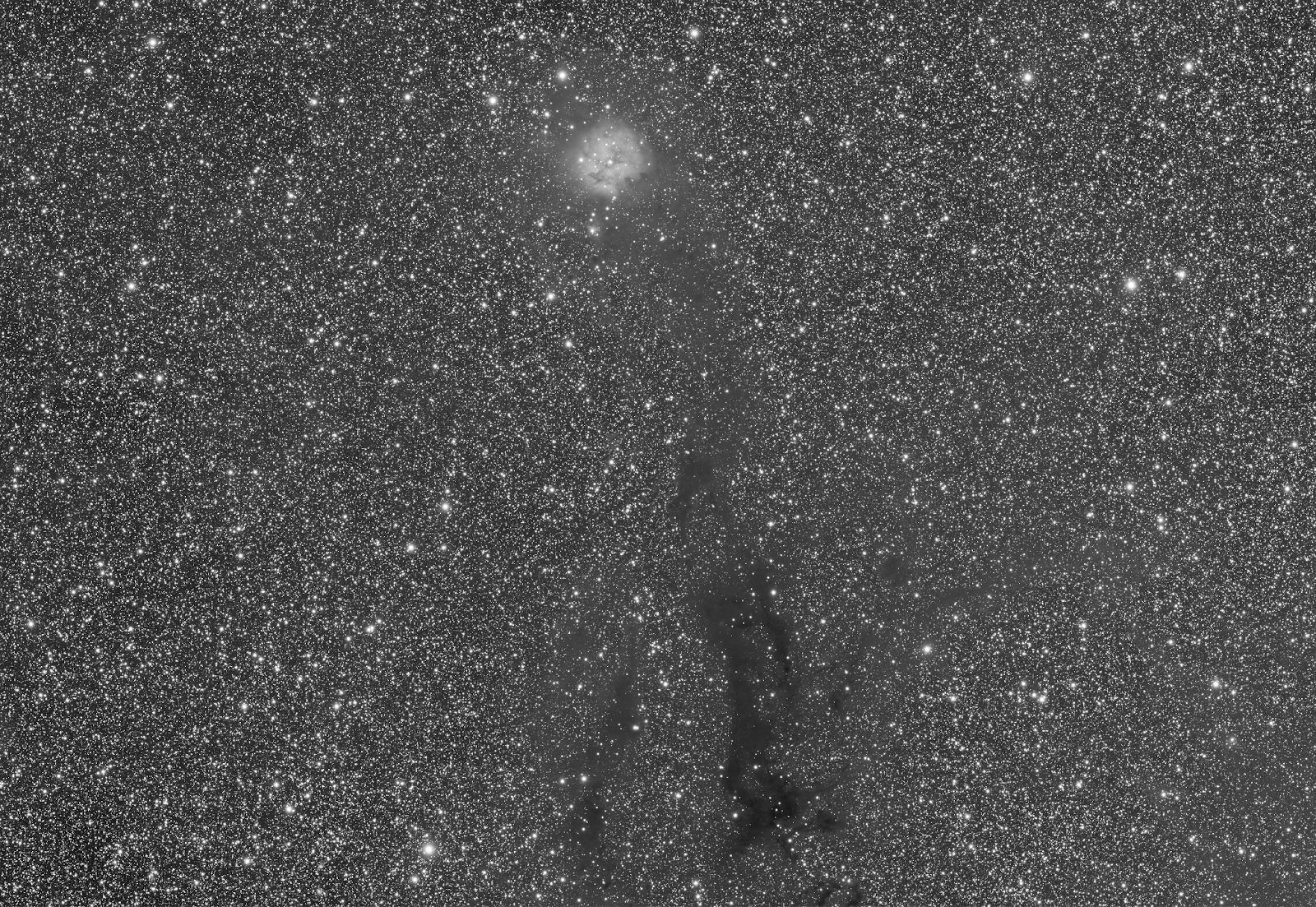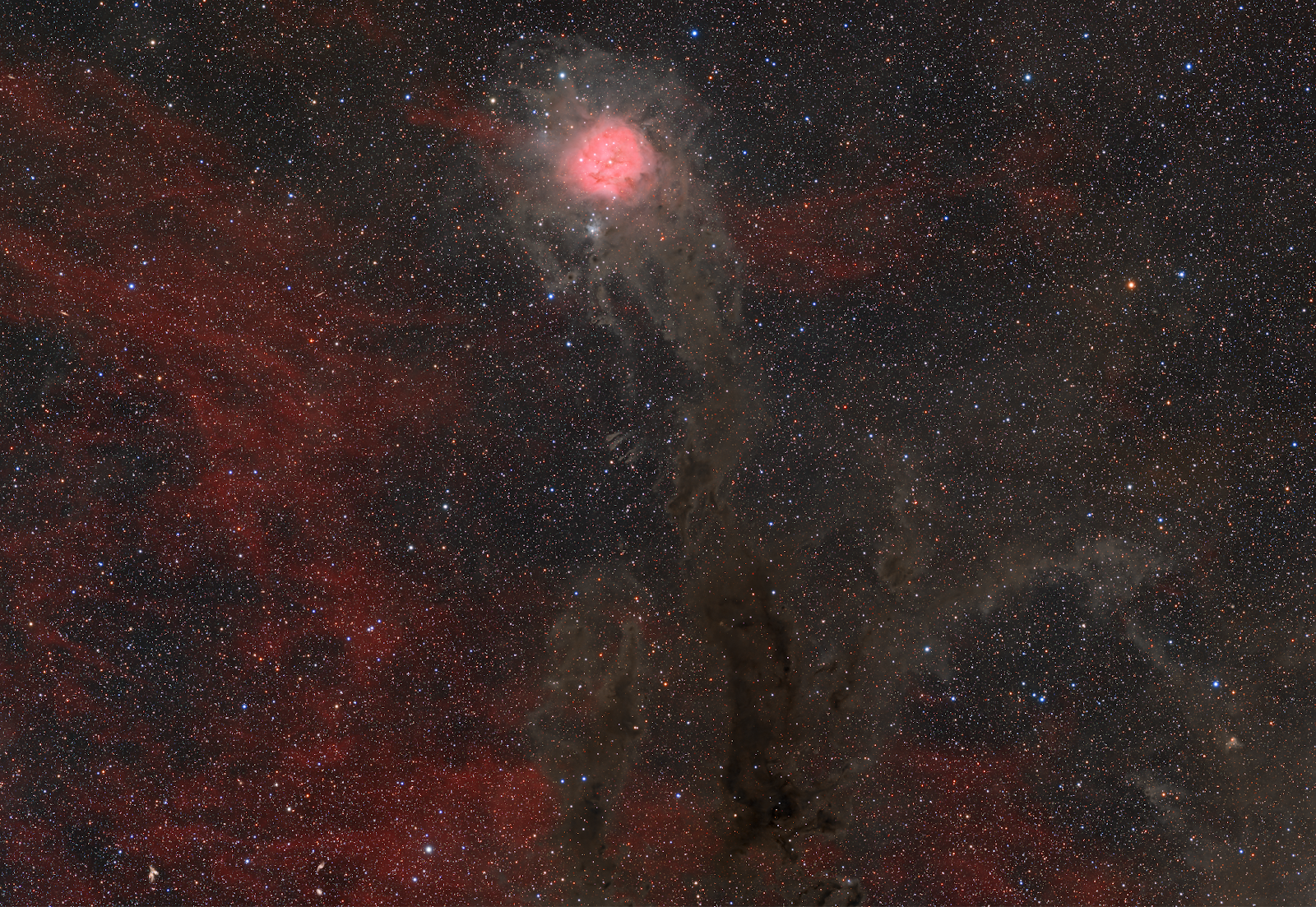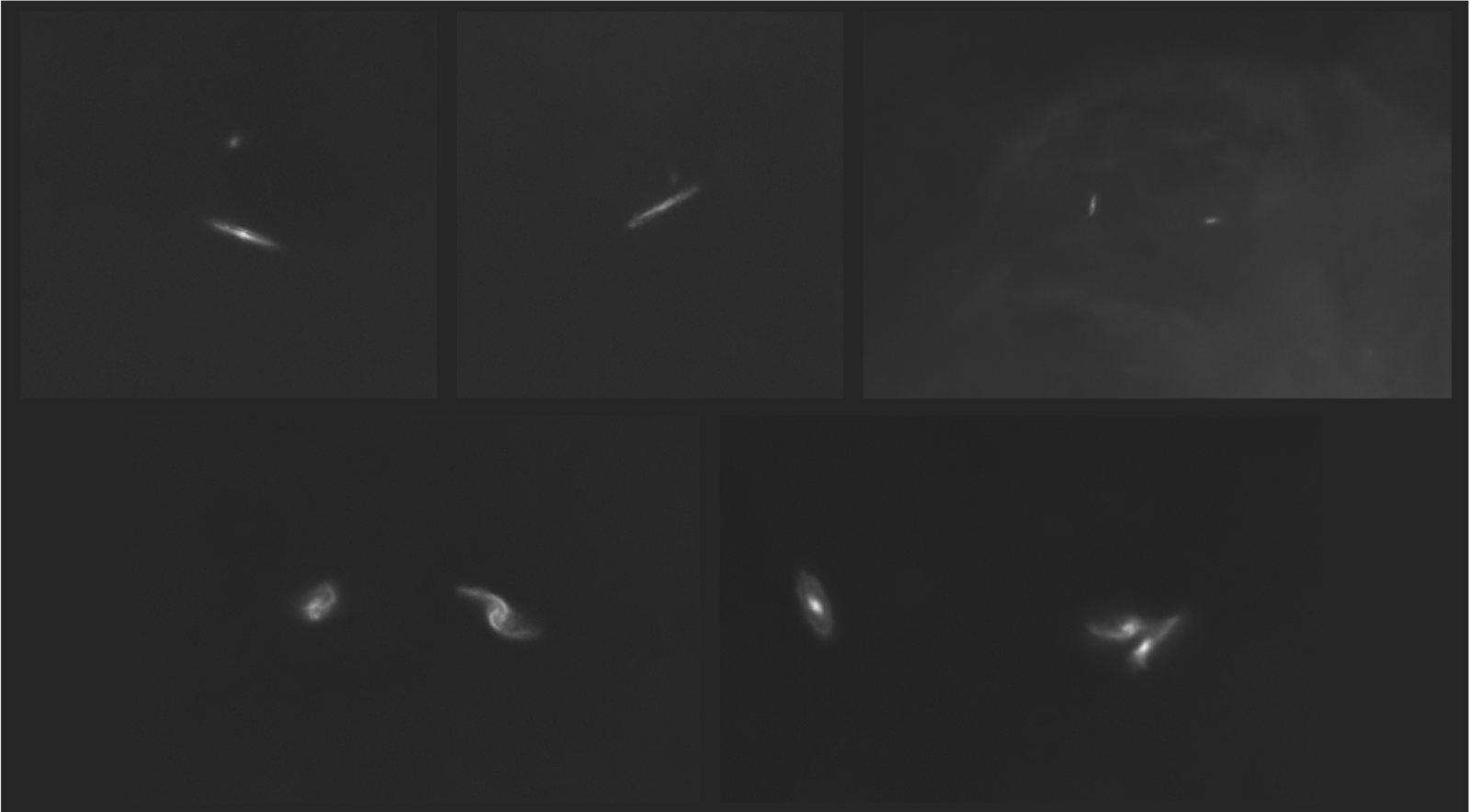By Jett Peters
The Cocoon Nebula represents one of the few reflection and emission nebulae in the summer sky. These nebulae are more common in the winter, with a few notable examples in the Angel, M78, and the Horsehead Nebula. The Cocoon is located in the constellation Cygnus and can be imaged throughout the summer. The structure of the nebula itself is very unique, with a bright core of hydrogen above a vast dust pillar. There is also wispy hydrogen emission in the background and several small galaxies.
While composite dust and emission nebulae are some of the most interesting and dynamic in the night sky, they are also far and away the hardest to process, and the Cocoon is no exception. While the core of the nebula is bright and easily resolved and processed by a beginner, the dust column beneath the core is difficult to resolve and process, providing a challenge even for experienced astrophotographers. When processing the dust, the core is easily blown out, and careful masking is necessary. The most significant obstacle in processing this target, however, is its location. The Cocoon is relatively close to the core of the galaxy, and like other targets in this vicinity, it suffers from the volume of stars.

The sheer number of stars does present a striking visual, but these stars obscure the structure of the Cocoon’s dust column. Furthermore, if the stars are removed using StarX, which is necessary to process this target to a high level, a substantial amount of the background will be star removal artifacts. Software like StarX, while doing a good job to leave the image as clean as possible, does leave behind artifacts, and when there are hundreds of thousands of stars present in the image, this becomes a problem. This means that you can’t push the data as hard as you otherwise could. While the areas of the image that did not have stars to begin with stay relatively noise free, the subtracted regions become distorted. Another difficulty is knowing how far to push the data. On one hand, if you don’t push the data enough, when reintroducing the stars the structure will once again be obscured. If you push the data too hard, in part due to the star subtractions, the detail and image quality will suffer. Therefore, while a well-processed image with significant data looks stunning, I caution against going into a Cocoon project without understanding the complexities. Plan to spend over 50 hrs imaging, and many more processing, with the outcome sometimes failing to meet expectations.
The image below is my current take on the Cocoon Nebula. It is a 90 hr image, with 30 in both Ha and L, and 10 in R,G and B. This is still a work in progress, and if I improve the image to a significant extent, I will make sure to detail my processing workflow in an upcoming blog.

Here are a few of the galaxies surrounding the Cocoon. While these galaxies are very small in angular size and therefore difficult to resolve, some of them are very interesting in structure. There is even a galaxy collider present!

